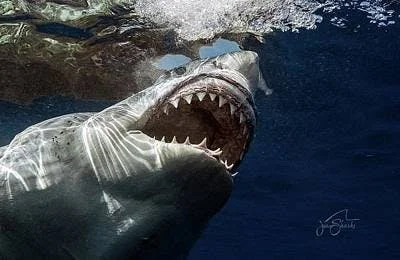Sharks are often portrayed as fearsome predators, but they play a vital role in maintaining healthy marine ecosystems. As apex predators, sharks are at the top of the food chain and help to regulate the populations of other marine species.
One of the most important roles that sharks play in marine ecosystems is controlling the populations of other predators, such as smaller sharks and marine mammals. By preying on these animals, sharks help to prevent them from overexploiting their own prey species, which can have cascading effects on entire marine ecosystems.
Sharks also play a crucial role in regulating the populations of mesopredators, which are smaller predators that feed on smaller prey species. By controlling the populations of mesopredators, sharks help to prevent these species from becoming too abundant and causing imbalances in the ecosystem.
In addition to their role as predators, sharks also help to maintain healthy marine ecosystems through their role as scavengers. By feeding on dead and dying animals, sharks help to remove these carcasses from the ecosystem, which can help to prevent the spread of disease and other negative impacts on the ecosystem.
Sharks also play a role in nutrient cycling in marine ecosystems. By consuming prey species and excreting waste products, sharks help to recycle nutrients back into the ecosystem, which can help to support the growth of other marine organisms.
Finally, sharks play a crucial role in maintaining the health of coral reefs, which are one of the most important ecosystems in the world. By controlling the populations of herbivorous fish that graze on coral, sharks help to prevent these fish from overgrazing and damaging the coral. This, in turn, helps to maintain the structural integrity of the reef and the diverse ecosystem it supports.
In conclusion, sharks play a vital role in maintaining healthy marine ecosystems. As apex predators, they help to control the populations of other predators and mesopredators, regulate nutrient cycling, and maintain the health of important ecosystems such as coral reefs. By recognizing the ecological importance of sharks and working to protect them, we can help to ensure the long-term health of our oceans and the many species that rely on them.
References:
Ferretti, F., et al. "Ecological role of sharks in a changing world." Advances in Marine Biology 78 (2017): 201-257.
Heithaus, M. R., et al. "Top predators as ecological engineers: effects of mesopredator control on coral reef structural dynamics." Ecology 87.12 (2006): 3460-3468.
Worm, B., et al. "Global patterns of predator diversity in the open oceans." Science 309.5739 (2005): 1365-1369.





